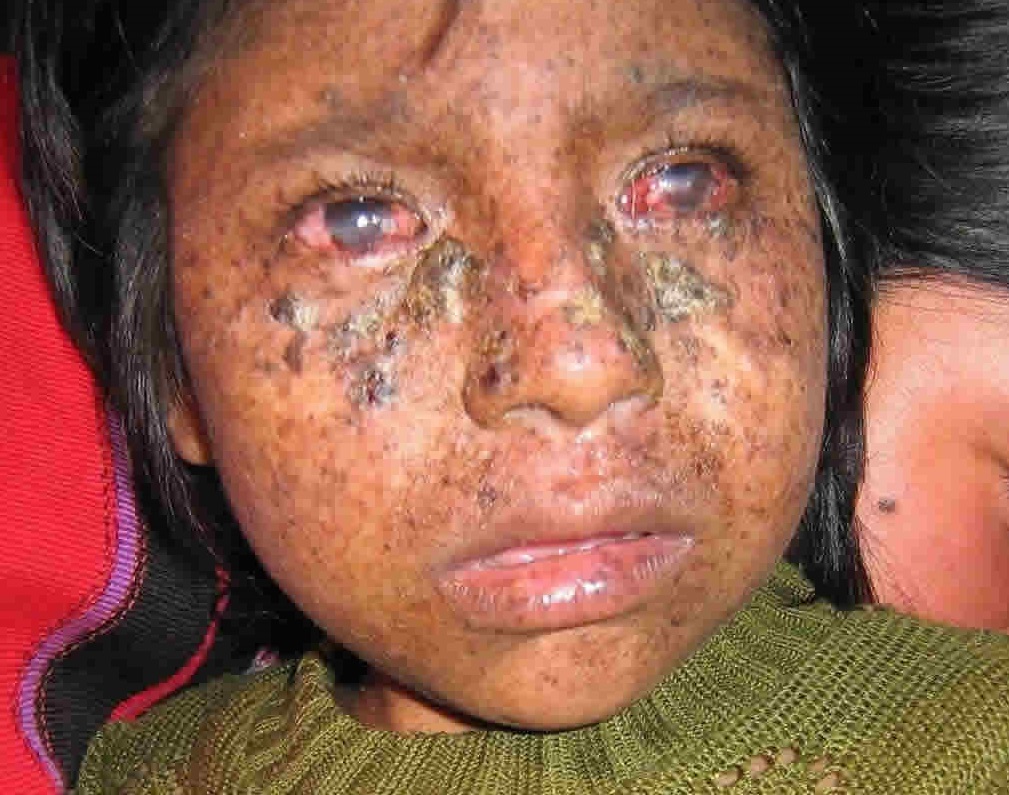Makindo Medical Notes"One small step for man, one large step for Makindo" |
|
|---|---|
| Download all this content in the Apps now Android App and Apple iPhone/Pad App | |
| MEDICAL DISCLAIMER: The contents are under continuing development and improvements and despite all efforts may contain errors of omission or fact. This is not to be used for the assessment, diagnosis, or management of patients. It should not be regarded as medical advice by healthcare workers or laypeople. It is for educational purposes only. Please adhere to your local protocols. Use the BNF for drug information. If you are unwell please seek urgent healthcare advice. If you do not accept this then please do not use the website. Makindo Ltd. |
Xeroderma pigmentosum
-
| About | Anaesthetics and Critical Care | Anatomy | Biochemistry | Cardiology | Clinical Cases | CompSci | Crib | Dermatology | Differentials | Drugs | ENT | Electrocardiogram | Embryology | Emergency Medicine | Endocrinology | Ethics | Foundation Doctors | Gastroenterology | General Information | General Practice | Genetics | Geriatric Medicine | Guidelines | Haematology | Hepatology | Immunology | Infectious Diseases | Infographic | Investigations | Lists | Microbiology | Miscellaneous | Nephrology | Neuroanatomy | Neurology | Nutrition | OSCE | Obstetrics Gynaecology | Oncology | Ophthalmology | Oral Medicine and Dentistry | Paediatrics | Palliative | Pathology | Pharmacology | Physiology | Procedures | Psychiatry | Radiology | Respiratory | Resuscitation | Rheumatology | Statistics and Research | Stroke | Surgery | Toxicology | Trauma and Orthopaedics | Twitter | Urology
Related Subjects: |Nikolsky's sign |Koebner phenomenon |Erythema Multiforme |Pyoderma gangrenosum |Erythema Nodosum |Dermatitis Herpetiformis |Lichen Planus |Acanthosis Nigricans |Acne Rosacea |Acne Vulgaris |Alopecia |Vitiligo |Urticaria |Basal Cell Carcinoma |Malignant Melanoma |Squamous Cell Carcinoma |Mycosis Fungoides (Sezary Syndrome) |Xeroderma pigmentosum |Bullous Pemphigoid |Pemphigus Vulgaris |Seborrheic Dermatitis |Pityriasis/Tinea versicolor infections |Pityriasis rosea |Scabies |Dermatomyositis |Toxic Epidermal Necrolysis |Stevens-Johnson Syndrome |Atopic Eczema/Atopic Dermatitis |Psoriasis
Xeroderma Pigmentosum (XP) ☀️🧬 is a rare autosomal recessive disorder caused by defective nucleotide excision repair (NER), leading to an inability to repair DNA damaged by ultraviolet (UV) radiation. The result is chromosome breakage, premature skin ageing, and an extremely high risk of skin cancers.
📖 About
- Inherited in an autosomal recessive manner.
- Children present with extreme UV sensitivity — even minimal sun exposure causes blistering and freckle-like pigmentation.
- Life expectancy is significantly shortened ⏳, with <40% surviving beyond 20 years without rigorous UV protection.
- Seen more frequently in populations with consanguineous marriages.
🔬 Aetiology & Pathophysiology
- Mutations in genes responsible for the nucleotide excision repair pathway (e.g., XPA–XPG genes).
- Failure to repair UV-induced thymidine dimers → accumulation of DNA damage → malignant transformation.
- This explains the markedly increased incidence of skin cancers at a very young age.
⚠️ Predisposition to Malignancy
- Skin cancers can develop in childhood (decades earlier than the general population).
- Common tumours include:
- 🟤 Basal cell carcinoma
- 🔴 Squamous cell carcinoma
- ⚫ Malignant melanoma
- 🟠 Sebaceous gland carcinoma
- 🟣 Fibrosarcoma (rare)

👀 Clinical Features
- Infancy: severe photosensitivity with blistering after minimal sun exposure.
- Freckle-like hyperpigmentation on sun-exposed areas (before age 2).
- Atrophic skin lesions with telangiectasia and multiple actinic keratoses.
- Marked dryness and pigmentation changes (hence “Xeroderma Pigmentosum”).
- Ocular problems: photophobia, chronic conjunctivitis, keratitis, and eventual visual loss.
- Neurological complications (in ~20–30%): microcephaly, progressive sensorineural deafness, developmental delay, and ataxia.
💊 Management
- 🏖️ Absolute UV avoidance — high-factor (SPF 50+) broad-spectrum sunscreens, UV-blocking films on windows, protective clothing, and avoidance of outdoor daylight exposure.
- Regular dermatology surveillance for early cancer detection; suspicious lesions should be biopsied promptly.
- Oral retinoids (e.g., isotretinoin, acitretin) may reduce the incidence of new skin cancers by suppressing premalignant cells.
- Management of ocular involvement by ophthalmology: artificial tears, protective eyewear, keratoplasty if severe.
- Genetic counselling is essential for families due to autosomal recessive inheritance.
- Sadly, most patients die from metastatic melanoma or aggressive SCC in adolescence or early adulthood.
🔮 Prognosis
- With strict UV avoidance and early cancer excision, survival can be extended, but lifelong vigilance is essential.
- Quality of life is often impacted by severe restrictions on outdoor activity and progressive ocular/neurological disease.